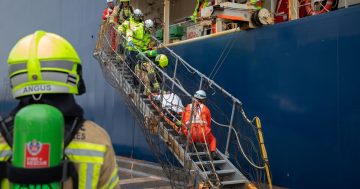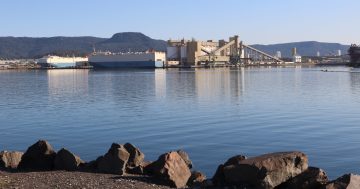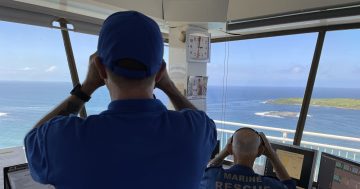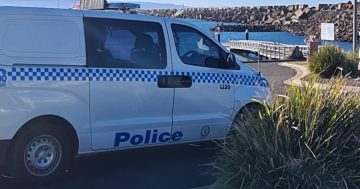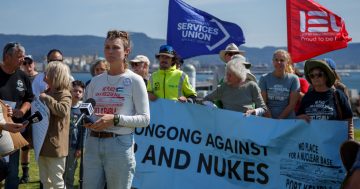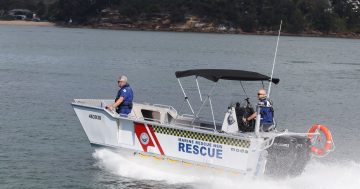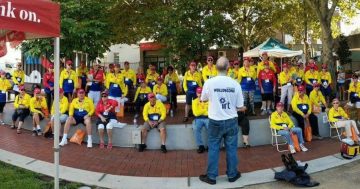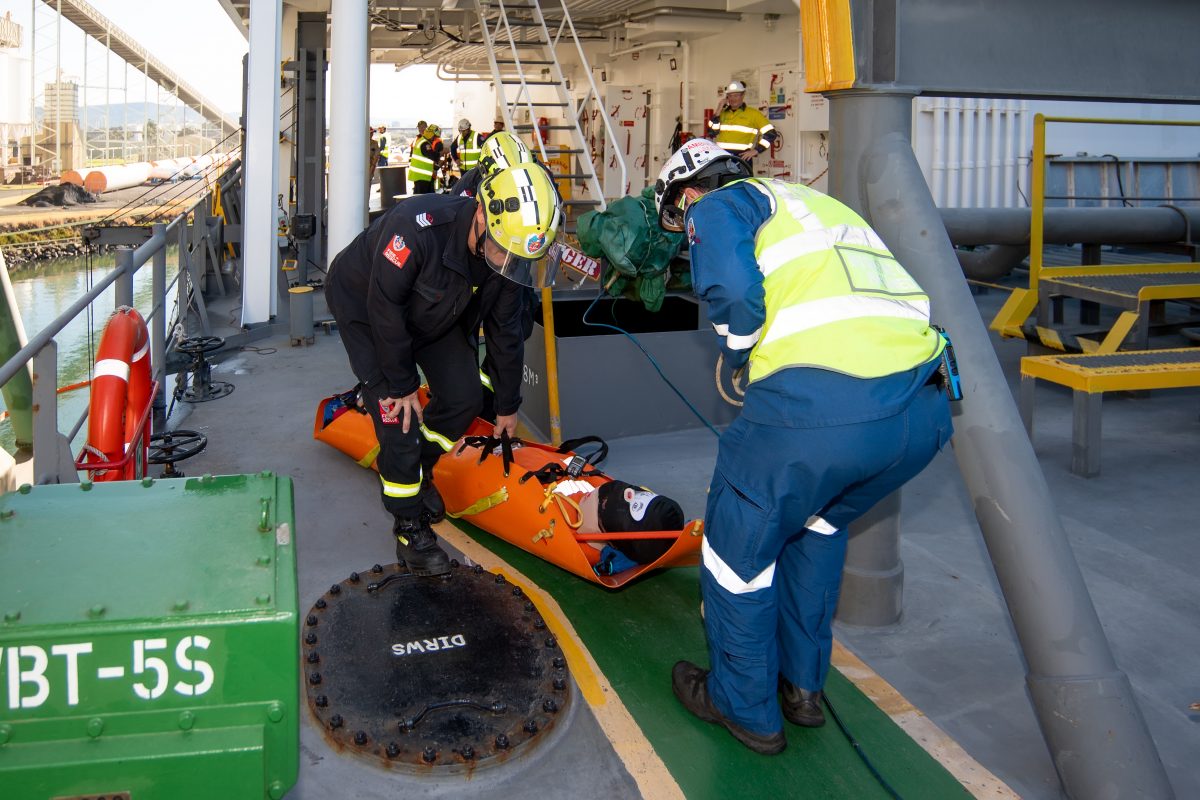
The multi-agency response at Port Kembla took three hours. Photos: Port Authority of NSW.
Emergency authorities have descended on Port Kembla for a complicated multi-agency operation designed to test the capabilities of our responders.
More than 50 personnel from several agencies took part in the full-scale operation run by the Port Authority of New South Wales as part of an annual exercise.
Harbourmaster Sharad Bhasin led the event, which replicated simultaneous incidents, all of which were kept secret from the other personnel until they were in the moment.
“The agencies knew that there would be an event and they knew there was a ship,” Sharad said. “Everything else was kept to ourselves.”
The event took three hours and included putting a boom around the ship to contain spillage and extricating a crew member who was injured.
It was designed to help test plans and procedures for emergency management, and ensure all the agencies are familiar and confident if there is a disaster.
“We don’t know when it is going to happen but if we practise enough, not only internally but inter-agency, it becomes like a muscle,” Sharad said.
He said such training proved particularly vital in 2018 when there was a fire onboard a ship named Iron Chieftain, which required other agencies to get involved.
“Two months before the actual incident, we conducted a fire drill,” Sharad said. “And it was successfully extinguished and was really productive.”
The training event also included representatives from NSW Ports, Fire & Rescue NSW, NSW Ambulance, the Environment Protection Authority, GrainCorp and Svitzer.
Fire & Rescue Inspector Andrew Erlik said the collaboration provided a rare opportunity to work in an unfamiliar environment with new challenges.
“A vessel or a ship is a unique workplace for Fire & Rescue NSW and traditionally is not somewhere we’d normally attend for a rescue incident, we’re more familiar with transport, industrial or in the home,” he said.
He said that understanding the different types of vessels, the infrastructure and the potential challenges while working in the port helped make the responders more comfortable and able to work more efficiently.
“We’re learning on the run as we go into these exercises about the ship compartmentations. Some of them have installed fire protection systems that take away the oxygen,” Andrew said. “So it’s vitally important that we are aware of these things so at least we know if we get called here, we’ve got an idea of what’s in front of us.”
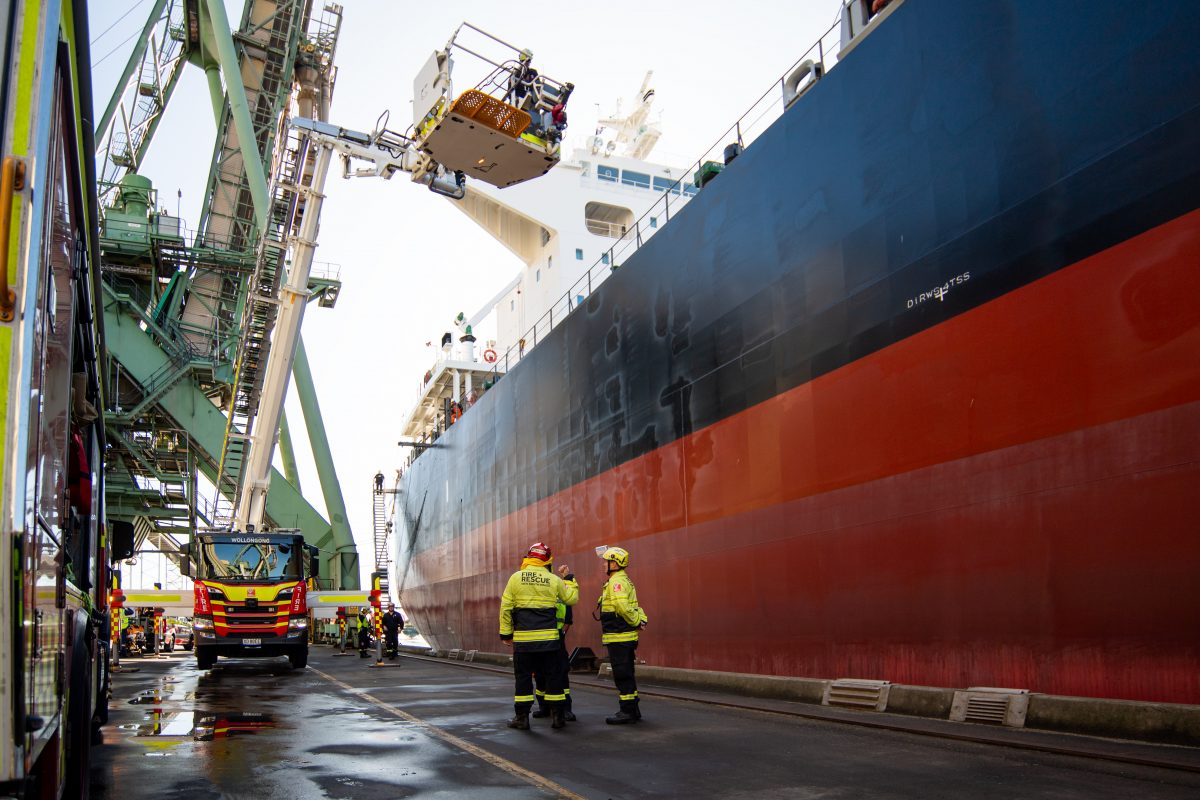
Agencies had to collaborate to stop multiple incidents simultaneously.
And for many responders, it’s not just the infrastructure that is unfamiliar, it is also the relationships.
“These exercises are invaluable because normally we work with agencies like the State Emergency Service, the Rural Fire Service, police and the ambulance service day in and day out,” Andrew said. “But we don’t work in the Port Authority with these agencies, it’s very seldom we do it.”
NSW Ports general manager of operations and environment Jonathan Lafforgue said Port Kembla was a key economic driver for the region and contributed $2.9 billion to the state’s economy each year.
“We have several berths here that are key berths for facilitating the trade of key export commodities as well as facilitating the import of vehicles and other key commodities important for the state and the region,” Jonathan said.
He said protecting the port was vital and although there were plans and processes to help prevent disasters, practice sessions increased his confidence.
“Many members of the emergency services would never have set foot on a freight ship, they would have never met with a crew,” Jonathan said.
“So these days are absolutely vital and give us assurance to know that should an event take place, the crews that come down here know the port, know the facilities and know what equipment to bring to take care of the event.”









